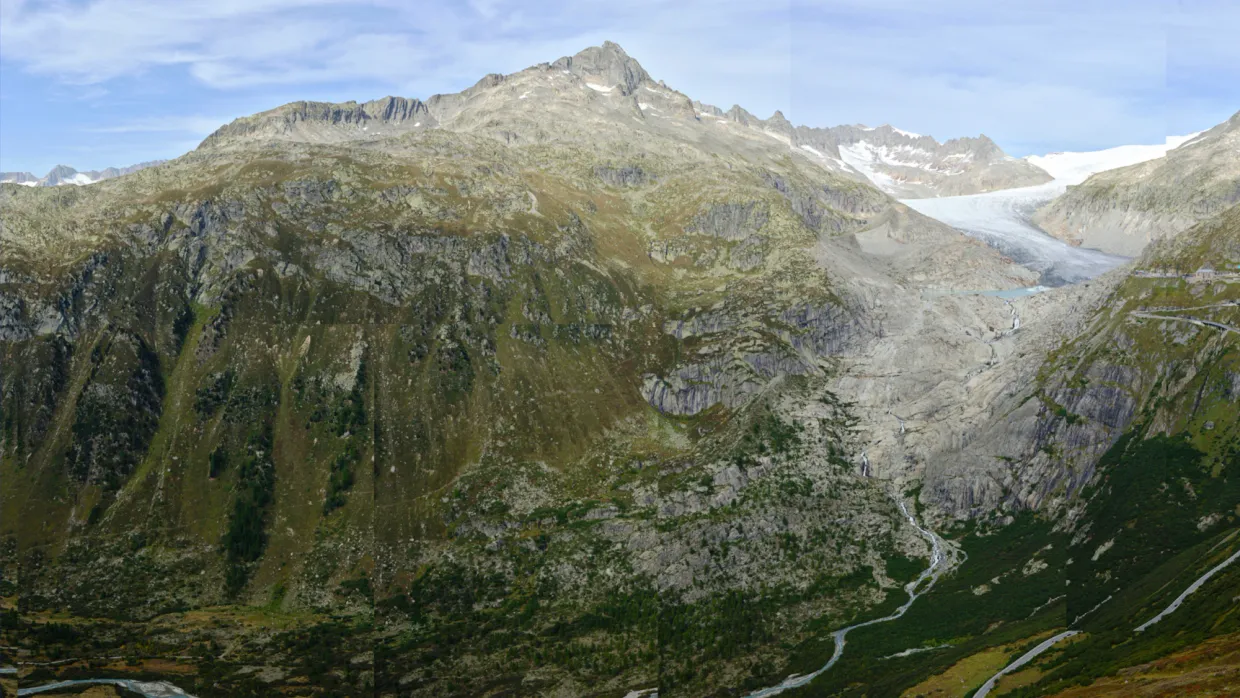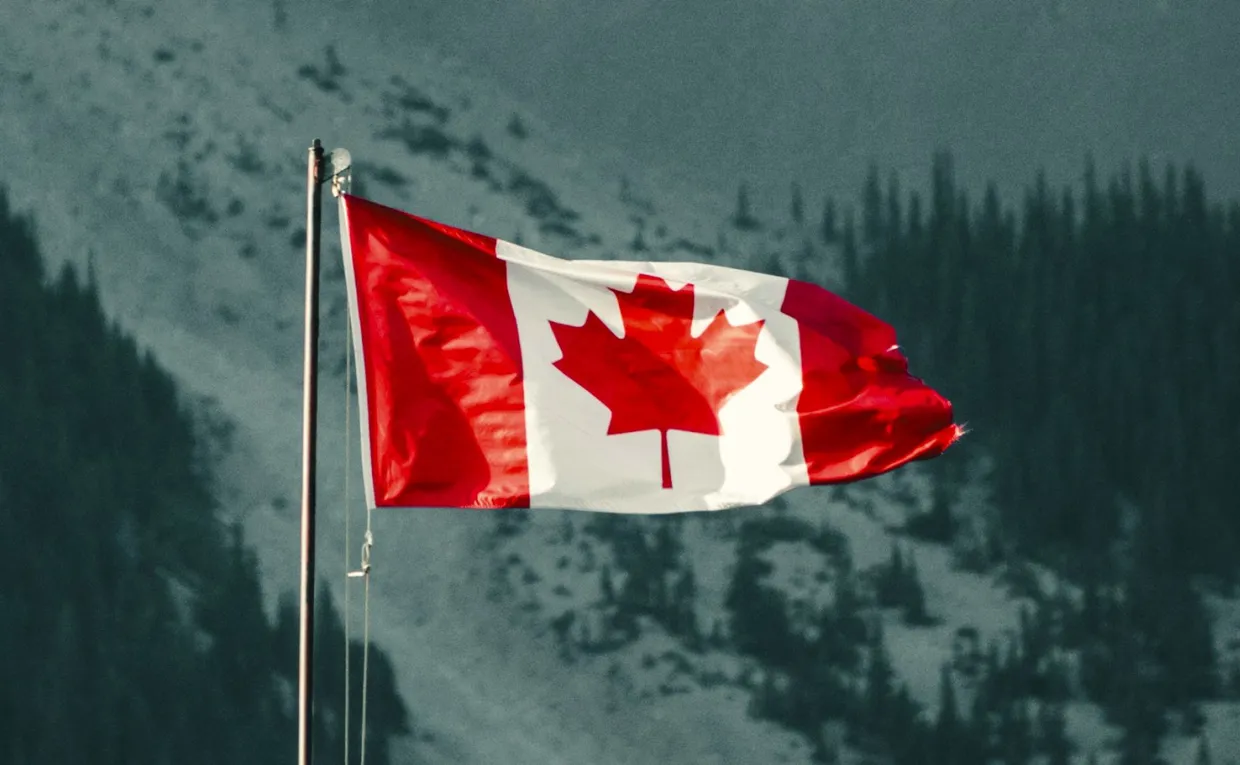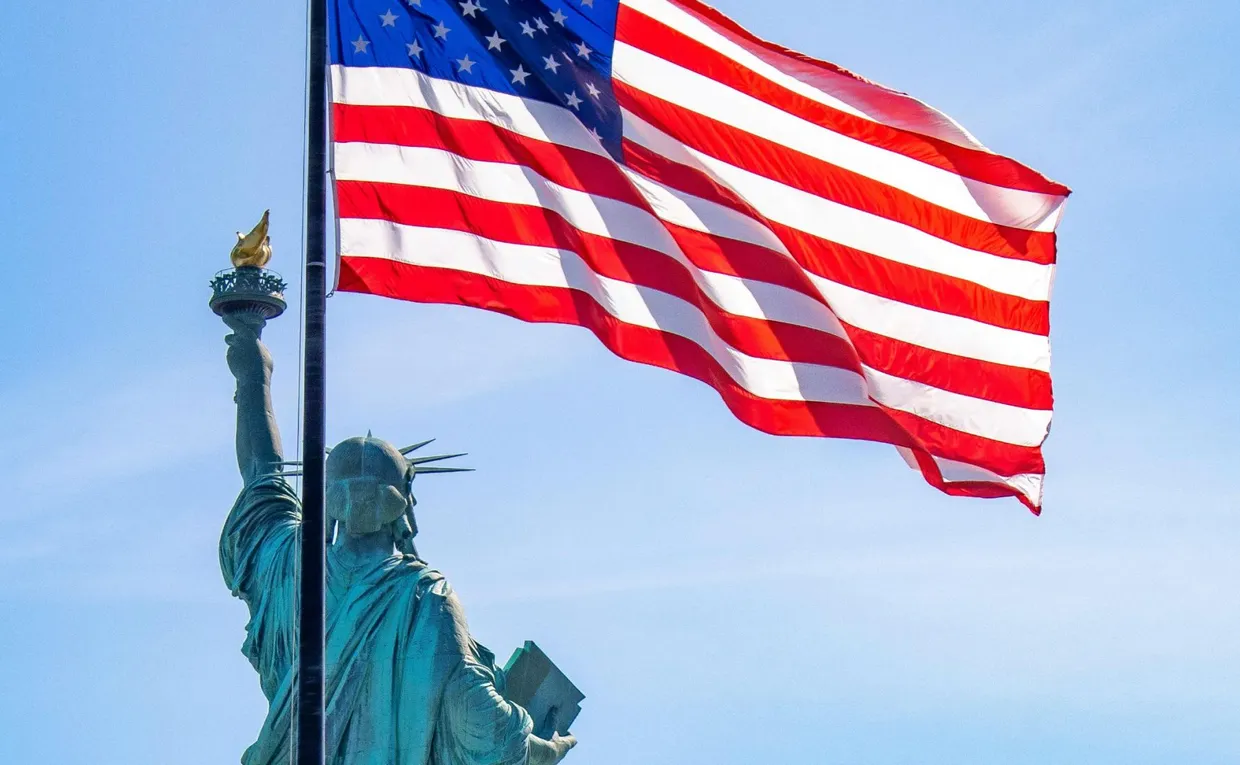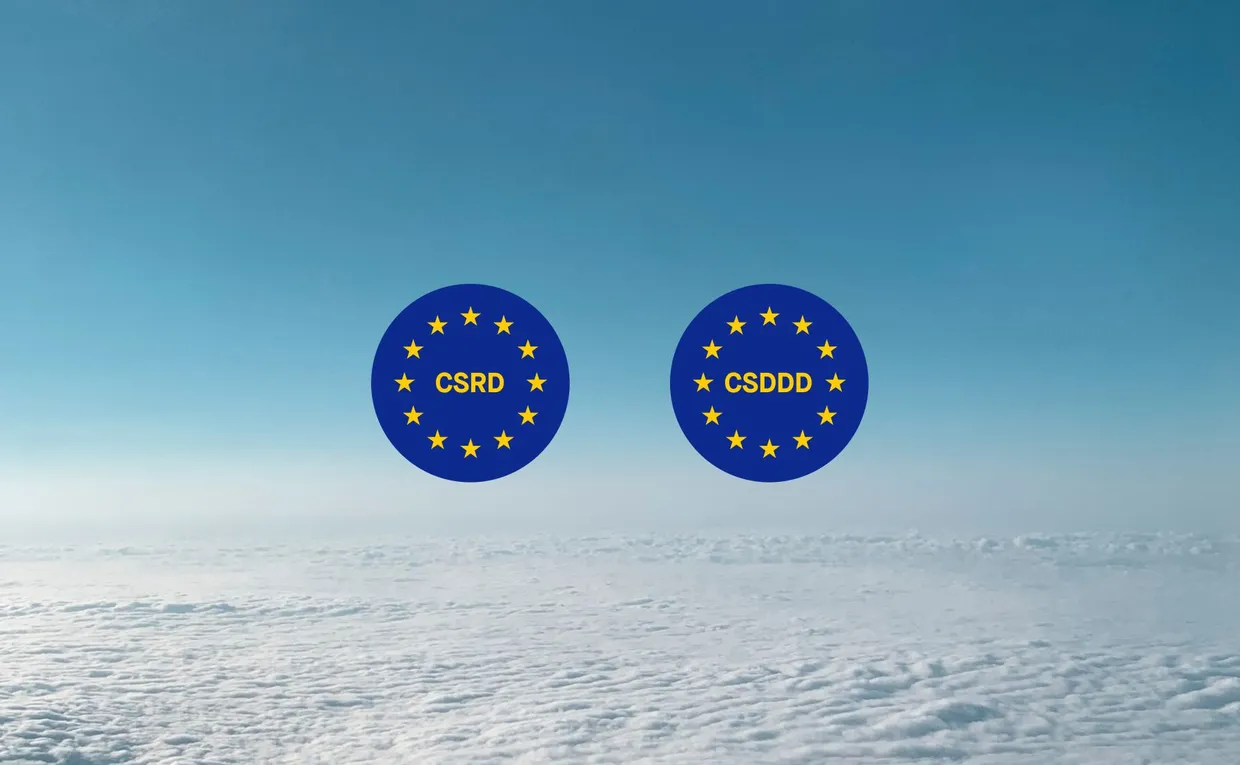German photographer Heiko Prigge advocates for collaborations between scientists and visual artists to deliver impactful messages about climate change.
It’s crucial to quantify the impact of climate change so we can take effective action. But numbers don’t always tell the full story. That’s how Heiko Prigge started to work with scientists.
“Glaciologists can calculate changes in glacier ice volume,” Prigge says, “but 50 billion metric tons of lost ice doesn’t say much about the why and how it affects the surrounding natural ecosystems.”
Last year, he started a re-photography project. That is, photographing the same location at different times to show evidence of change. He’s doing this with ETH VAW, the laboratory of the Swiss Federal Institute of Technology that monitors glaciers in the Alps.
The goal is to compare the shape and size of the Rhone, Trift, and Grindelwald glaciers using archive photos from 1920-40s.
“It was so powerful to hike there, you don’t need a trained eye to notice the changes,” says Prigge.“They were really obvious.”
A quick look at the Trift Glacier photos shows the ice has melted and is now replaced by a lake and vegetation.
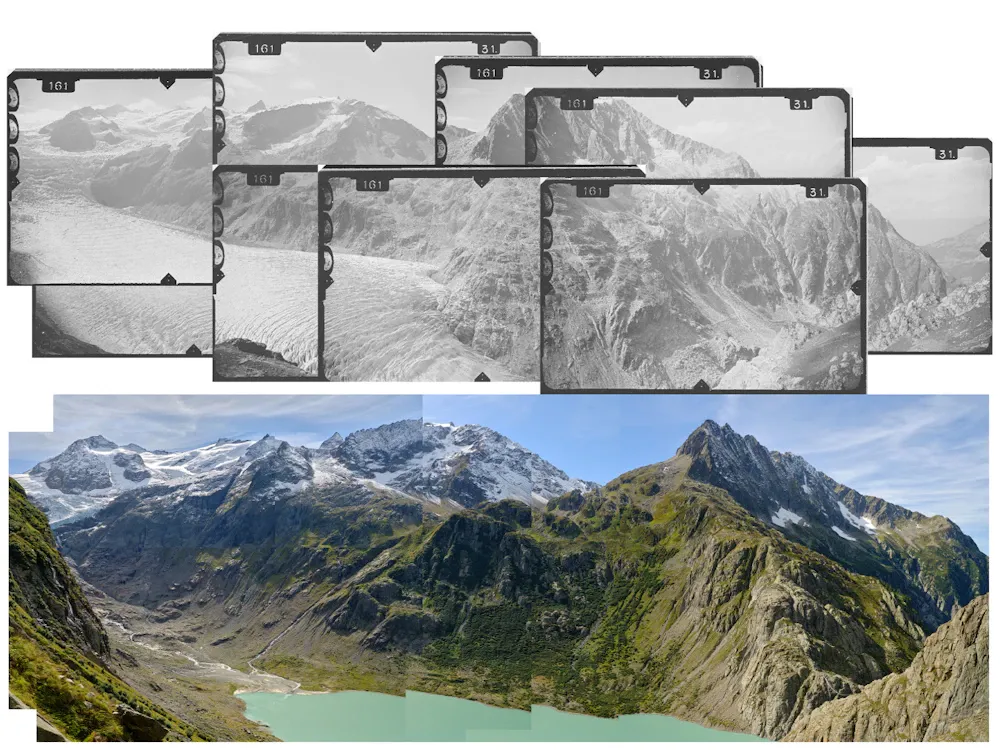
Trift Glacier, Station Murmetenstock taken on 9.09.1928, rephotographed on 23.09.2021 (top image: reconstructed panorama using archival survey images by swisstopo)
“It’s not just about creating beautiful images for magazines. I can prove a point because I’ve worked with scientists to take these photos.”
Due to the panorama format, finding and putting photos together was a big part of the project. Panorama involves taking several photos of different but overlapping views to create one seamless picture – like one big puzzle.
Prigge stitched together all the pieces of the Rhone, Trift, and Grindelwald archive photos to identify where they were taken. And he did the same with the photos taken in 2021.
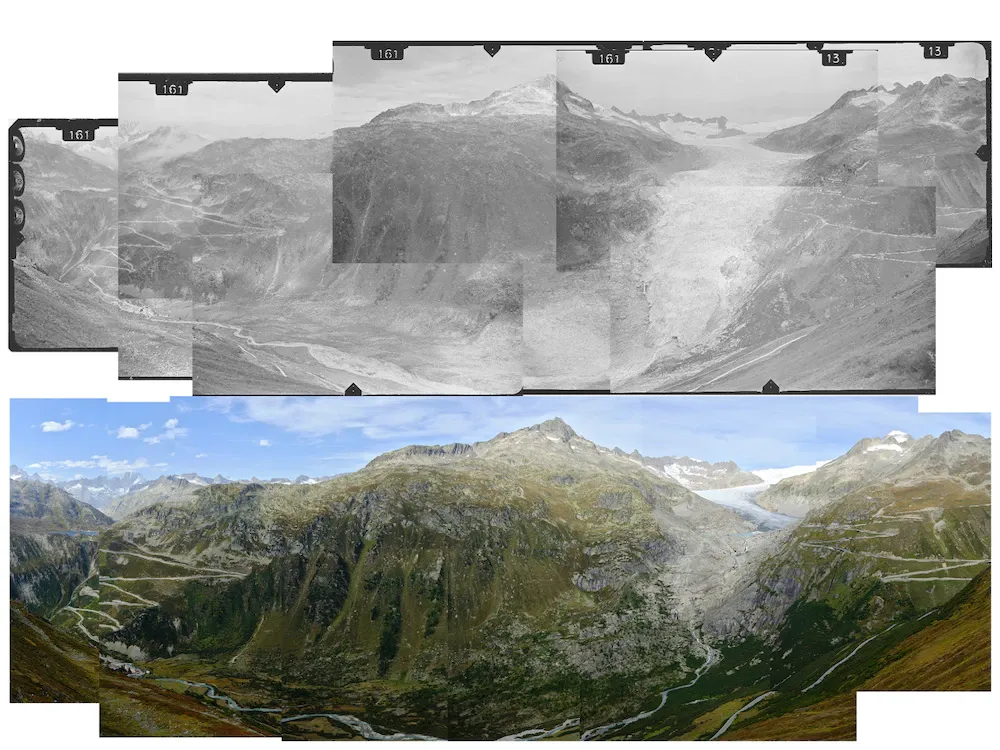
Rhone Glacier, Station Laengisgrat taken on 1.09.1928 and rephtographed on 25.09.2021 (top image: reconstructed panorama using archival survey images by swisstopo)
“The photos will deliver a critical visual message about the impact of climate change,” he says.
On top of his collaboration with ETH, Prigge’s work has garnered interest across industries – from ecologists looking to study post-glacier landscapes to art galleries and magazines.
He’s in talks to host photo exhibitions this year and plans to photograph the same three glaciers in 2022 and 2023, too.
Learn more about Heiko Prigge’s work.
Our collaboration with Heiko Prigge
The panorama technique inspired our cofounder Raphael Güller to use Prigge’s photos in our presentation at COP26. Stitching photos together was a great analogy to explain how Sweep measures a bank’s Scope 3: our platform maps the footprints of its portfolio companies and connects them to its overall emissions. See how it works.
